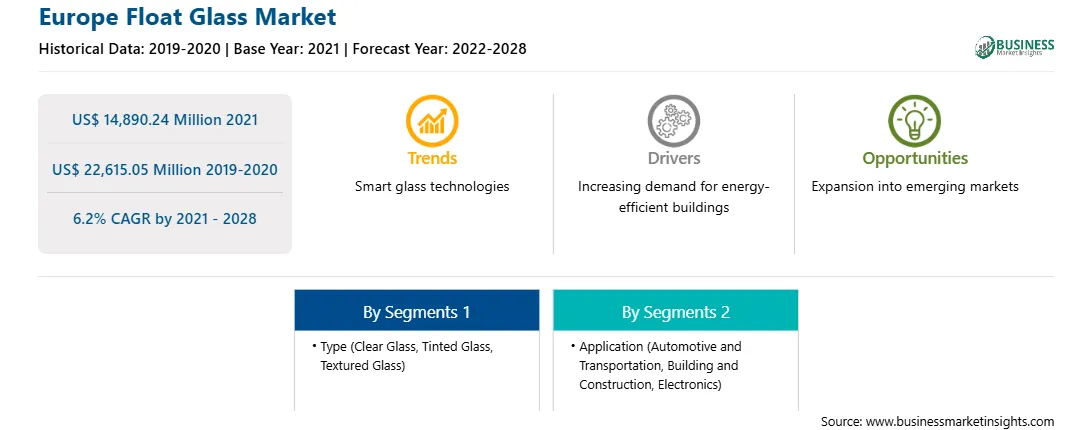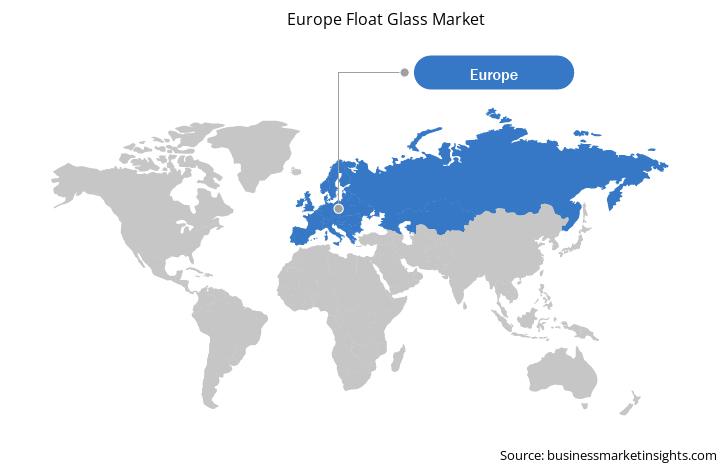There has been a rising preference for float glass in the electronic industry across the region due to its various benefits. Through a series of processing on float glass, including cutting, coating, drilling, grinding, and screen printing, the glass can be used for electronic or electric equipment such as LCD screen, touch screen, advertising machine screen, flat panel, and electromagnetic oven. Along with this, indium tin oxide (ITO) and anti-reflection (AR) coating will help in reducing the light reflectivity and assist in providing the necessary electrical conductivity for the glass screen. Manufacturers are focusing on producing thin sheet float glass, which will be used in various electronic appliances. For instance, AGC manufactured thin sheet float glass, used in next generation displays, touchscreens, lightings, and high-tech applications. Along with this, Schott BOROFLOAT—the world's first floated borosilicate glass—is being used to manufacture biochips, DNA sequencers, and chemical reactor inspection panels. Custom soda-lime float glass is increasingly used in non-scientific applications, including protecting CCTV cameras, picture framing applications, and flat panel displays. Thus, increased usage of float glass in the electronic industry will drive the Europe float glass market.
In case of COVID-19, Europe is highly affected specially France and the UK. Initially other member states had implemented drastic measures and travel restrictions, including partially closing their borders that impacted the import and export of products. Several industrial bases such as electronics, automotive, construction, and other industrial sectors have been impacted by the pandemic, which has negatively impacted the demand for float glass in the regional market. The gradual upliftment of lockdown restrictions in certain countries in Europe will facilitate the recovery of various industries and logistics operations and will have a positive impact on the float glass market. The European Automobile Manufacturers’ Association (ACEA) forecasts that the automotive industry will start to recover in 2021, with sales rising by about 10% compared to 2020. Thus, the recovering automotive industry will have a positive impact on the float glass market.
With the new features and technologies, vendors can attract new customers and expand their footprints in emerging markets. This factor is likely to drive the Europe float glass market. The Europe float glass market is expected to grow at a good CAGR during the forecast period.
Strategic insights for the Europe Float Glass provides data-driven analysis of the industry landscape, including current trends, key players, and regional nuances. These insights offer actionable recommendations, enabling readers to differentiate themselves from competitors by identifying untapped segments or developing unique value propositions. Leveraging data analytics, these insights help industry players anticipate the market shifts, whether investors, manufacturers, or other stakeholders. A future-oriented perspective is essential, helping stakeholders anticipate market shifts and position themselves for long-term success in this dynamic region. Ultimately, effective strategic insights empower readers to make informed decisions that drive profitability and achieve their business objectives within the market.

| Report Attribute | Details |
|---|---|
| Market size in 2021 | US$ 14,890.24 Million |
| Market Size by 2028 | US$ 22,615.05 Million |
| Global CAGR (2021 - 2028) | 6.2% |
| Historical Data | 2019-2020 |
| Forecast period | 2022-2028 |
| Segments Covered |
By Type
|
| Regions and Countries Covered | Europe
|
| Market leaders and key company profiles |
The geographic scope of the Europe Float Glass refers to the specific areas in which a business operates and competes. Understanding local distinctions, such as diverse consumer preferences (e.g., demand for specific plug types or battery backup durations), varying economic conditions, and regulatory environments, is crucial for tailoring strategies to specific markets. Businesses can expand their reach by identifying underserved areas or adapting their offerings to meet local demands. A clear market focus allows for more effective resource allocation, targeted marketing campaigns, and better positioning against local competitors, ultimately driving growth in those targeted areas.

The Europe Float Glass Market is valued at US$ 14,890.24 Million in 2021, it is projected to reach US$ 22,615.05 Million by 2028.
As per our report Europe Float Glass Market, the market size is valued at US$ 14,890.24 Million in 2021, projecting it to reach US$ 22,615.05 Million by 2028. This translates to a CAGR of approximately 6.2% during the forecast period.
The Europe Float Glass Market report typically cover these key segments-
The historic period, base year, and forecast period can vary slightly depending on the specific market research report. However, for the Europe Float Glass Market report:
The Europe Float Glass Market is populated by several key players, each contributing to its growth and innovation. Some of the major players include:
The Europe Float Glass Market report is valuable for diverse stakeholders, including:
Essentially, anyone involved in or considering involvement in the Europe Float Glass Market value chain can benefit from the information contained in a comprehensive market report.